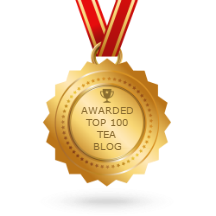
Tea pricing is one of the most complex pricing “systems” of all, comparable to that of precious stones: in both cases, only an experienced expert will be able to tell. I discovered a 400g box of loose broken Chinese green tea in a branch of an Asian food store chain in Germany last year, costing less than $5.00US, and 2 weeks later, I met a friend at Bremen, who told me he received a sample of a Chinese green tea as a gift that is sold at the price of $750.00US/100g on the market.
Yes, just like on other market, tea prices might not always be completely transparent and there will be the usual distortion bias due to different supply lines, and the idea or dream involved traders have about their margin. However, this approach won’t serve to explain the huge differences in prices for tea, at least if you compare prices within larger categories, such as Chinese green teas. Now, if you start looking for a more specific tea, you will find that the span between offers narrows, and will further narrow the more specific your search gets regarding the tea you are looking for.
Now, what makes cheap teas cheap, and can you actually taste the difference?
To answer the second question first: you can, and you cannot, but wherever you cannot I bet there is somebody who can. All clear? No? In my experience, the average human being (to keep it simple, that would be me, so the peaks might vary within some reasonable thresholds for other individuals) will be able to tell nuances in the $750.00US Chinese green tea mentioned above, I could convince my friend to throw a round, and there I was, attributing my incapability telling the value of this particular tea only by its taste to the “average human being” factor. Then, admittedly, there are people who will be able to tell. I have seen experienced tea masters tasting teas that were coming out of the blue blindfolded, and yes, they could tell, at least got very close in all cases. And they will not only be able to tell you, which tea it is, but also how much it costs.
Now, many of us, including myself, might never reach those higher ranks of sanctification, but still we love tea and, spending considerable amounts of money on our hobby, try to gain at least some basic understanding of its pricing. So, as for the second question, just as with precious stones or metals, the decisive factor for the price of a tea is its “rareness.” What about quality, you might ask. Of course, you are right, but as we will see in part 2 of this article, quality on the one hand is logically just one of the factors contributing to a tea’s “rareness”, and on the other hand, with tea there is a level of quality that is rather beyond said average human being’s assessability range, where only rareness beyond the concepts of taste or quality is what remains a defining factor.
There is quite a range of factors that contribute to the degree to which a tea is considered as rare, and we will have a close look at these in part 2 of this article.
See more of Thomas Kasper’s articles here.
© Online Stores, Inc., and The English Tea Store Blog, 2009-2014. Unauthorized use and/or duplication of this material without express and written permission from this article’s author and/or the blog’s owner is strictly prohibited. Excerpts and links may be used, provided that full and clear credit is given to Online Stores, Inc., and The English Tea Store Blog with appropriate and specific direction to the original content.



Leave a comment